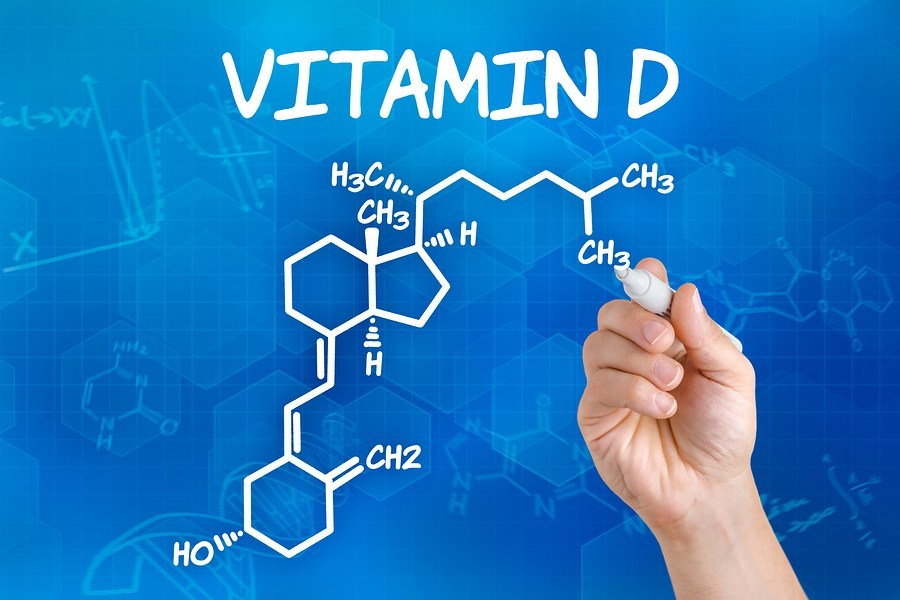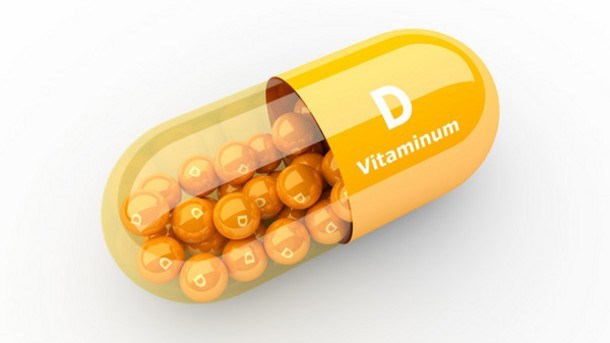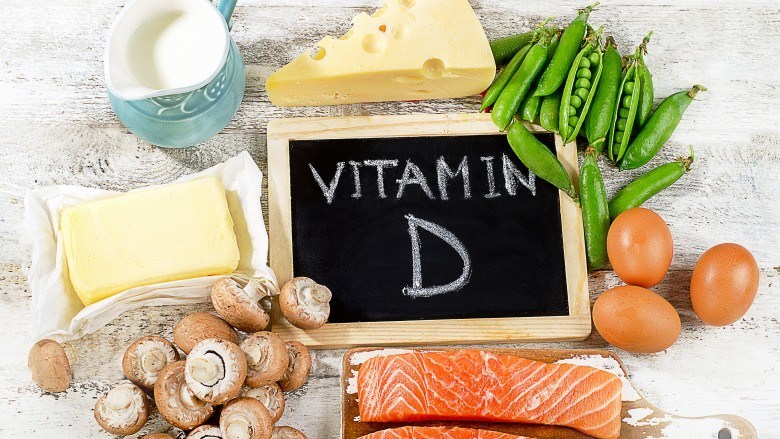People with XP must completely avoid exposure to the sun; therefore, they are at risk of suffering from Vitamin D deficiency. Vitamin D is called the “sunshine” vitamin. Vitamin D is created by the reaction between skin and the sun.
Vitamin D
The Serious Consequences of Limited Sunlight

Ultraviolet light is a two-edged sword. We know that it can cause DNA damage and bad burns but it also sets a remarkable chemical reaction in motion. When UVB strikes our skin, 7 dehydro-cholesterol is converted into cholecalciferol, a vitamin D precursor. This substance then travels from the blood vessels near the skin surface to the liver where it is converted into calcidiol (25-hydroxy). This is where our vitamin D is stored and it is usually what doctors measure to tell whether we have too little or too much in our system. Calcidiol is converted by the kidneys into calcitriol (1,25-hydroxy vitamin D), the strongest form of the hormone. (Yes, vitamin D is really a hormone). How much Vitamin D is made? Lots. Twenty minutes in summer sun in a bathingsuit can give 20,000 units. Lifeguards generate up to 60,000 units in a day.
Remarkably, when we’ve had our fill, even with ongoing sun exposure, production stops. One does not get vitamin D poisoning from spending too much time outside. Now, compare that with dietary sources. One typical best source is a glass of fortified milk. That gives us 100 units. Think of it. Just one minute in the summer sun gives us as much vitamin D as 10 glasses of milk! What is the RDA (recommended daily allowance)? 600 IU (international units) at present for most people. Some experts say that for those who spend a lot of time inside, the RDA should be much higher, over 1,000 IU. UVB, the wavelength that really makes vitamin D, does not penetrate glass. What happens if you don’t drink ten glasses of milk per day and spend most of your life inside? Vitamin D deficiency can result.
Bone diseases do better in the sun, osteoporosis and osteomalacia. Many skin diseases — acne, eczema, psoriasis, all see relief during the summer. Wounds heal faster in summer. Our immune system is stronger in the sun. Rarely mentioned is that hypertension (blood pressure), runs lower in summer. What about diabetes? It is known that sun exposure lowers blood sugar. Consider that 90% of obese persons are vitamin D deficient.
Many people get the winter blues, referred to as seasonal affective disorder (SAD). This may be related to a lack of visible light that lowers vitamin D levels. The lux is a unit of visible light. Indoor lighting typically runs 150 to 600 lux. The noonday sun puts out 100,000 lux! Even an overcast winter day puts out 1,000. When visible light enters the eye, it triggers the brain to produce serotonin and suppress melatonin. The former leads to a feeling of well-being, and the latter to better sleep.
People with XP must completely avoid exposure to the sun and become at risk of vitamin D deficiency. Low levels of vitamin D are associated with hearing loss. Perhaps this is why some people with XP lose their hearing.
Others at risk of Vitamin D deficiency are people with little sun exposure who don’t leave the house very often, people remaining in bed for extended periods of time, women who cover their faces and bodies for religious reasons, and people whose occupation prevents them from contact with the sun (night workers, miners). People with darker skin color because of increased melanin content in their skin (pigment that gives skin its color) have less ability to synthesize vitamin D from sunlight.
Is Vitamin D deficiency a problem? In a word, yes! Big problems.
Functions of Vitamin D

Vitamin D is important to keep bones strong. The most important functions of vitamin D are maintaining calcium and phosphorus levels, stimulating the intestinal absorption of calcium, and reabsorption in the kidneys. It regulates the metabolism of these minerals vital for normal growth and development of bones and teeth. Vitamin D regulates calcium levels in the blood, playing an important role in the healthy functioning of nerves and muscles. Calcium levels are essential for nerve impulse transmission and muscle contraction. Vitamin D is involved in cell growth and maturation. Vitamin D supports the immune system by helping to prevent infection. Vitamin D helps regulate hormones by working with parathyroid hormone, calcitonin (produced by the thyroid gland), and estrogen. Vitamin D assists in the pancreatic secretion of insulin, possibly by maintaining serum calcium levels important for proper insulin secretion.
Sources of Vitamin D

You can get Vitamin D supplements in the form of tablets, capsules, or liquid. Generally, Vitamin D3 cholecalciferol is preferred as more effective (as compared to Vitamin D2 ergocalciferol).
It is important that people maintain a diet rich in vitamin D. Vitamin D can be found in many foods. Milk and other dairy products usually contain supplemental vitamin D. Some foods are naturally high in vitamin D.

Food With High Levels Of Vitamin D
Animal Origin
- Milk (fortified with vitamin D)
- Swiss cheese
- Eggs (yolk)
- Butter
- Fish liver oil
- Fatty fish (salmon, tuna, herring, sardines)
- Oysters
Non-Animal Origin
- Mushrooms
- Grains and cereals (fortified with vitamin D)
- Orange Juice (fortified with vitamin D)
- Soy products (tofu and soymilk fortified with Vitamin D).
